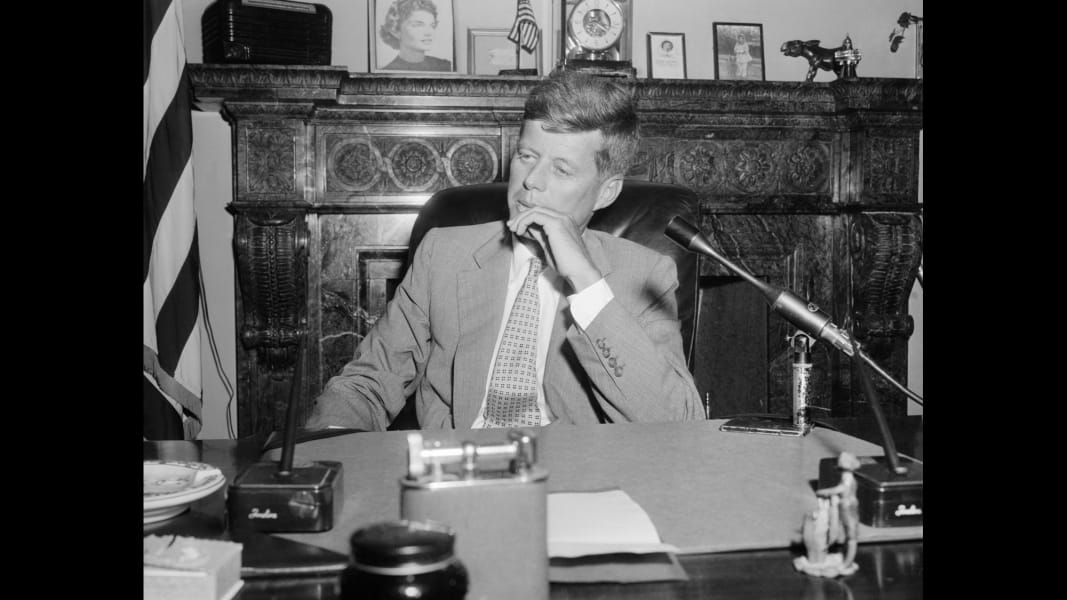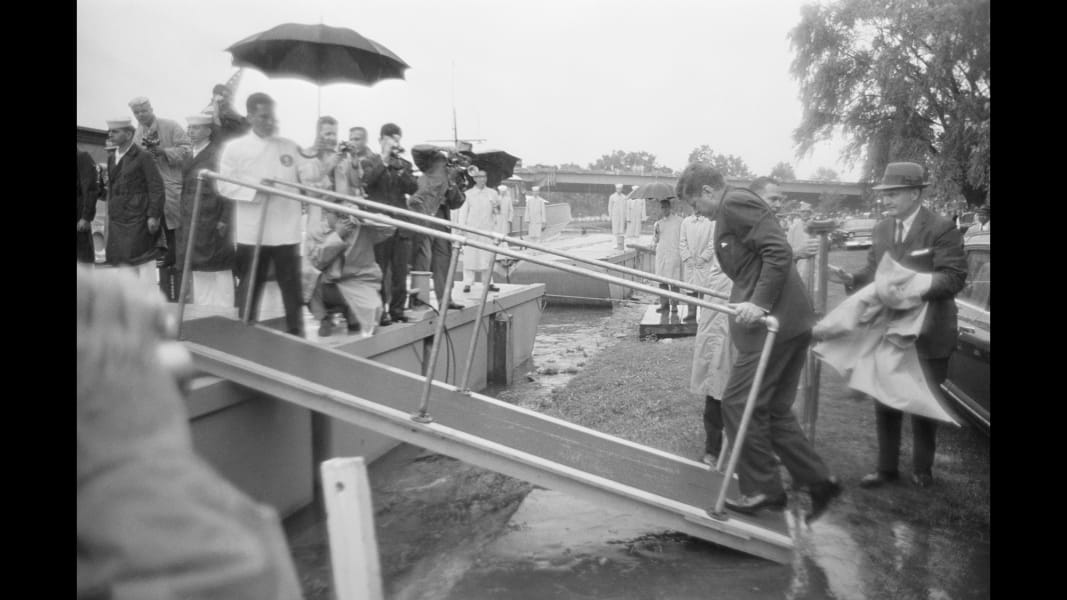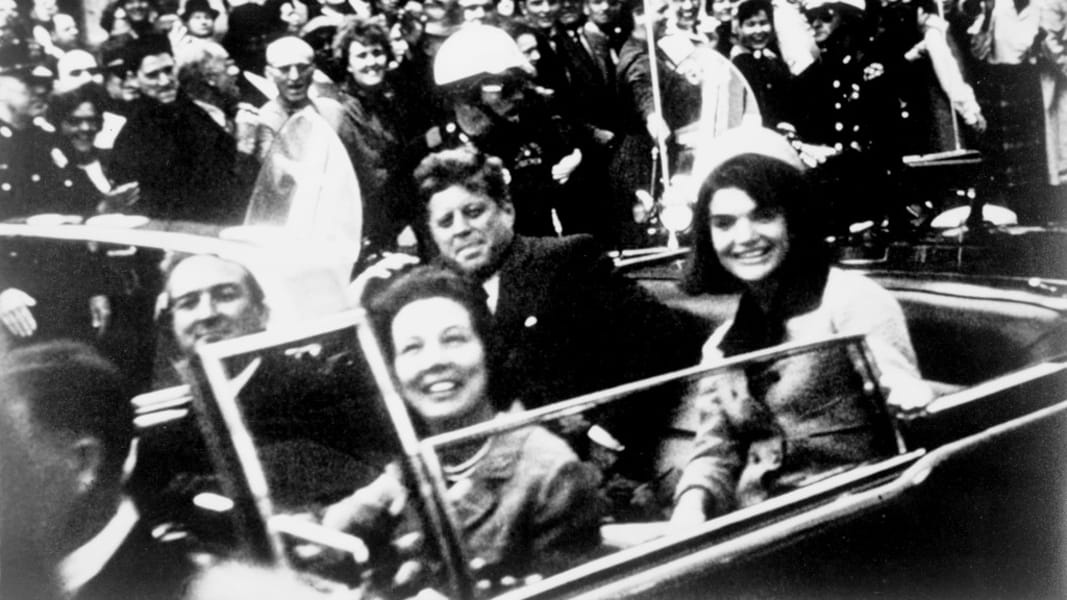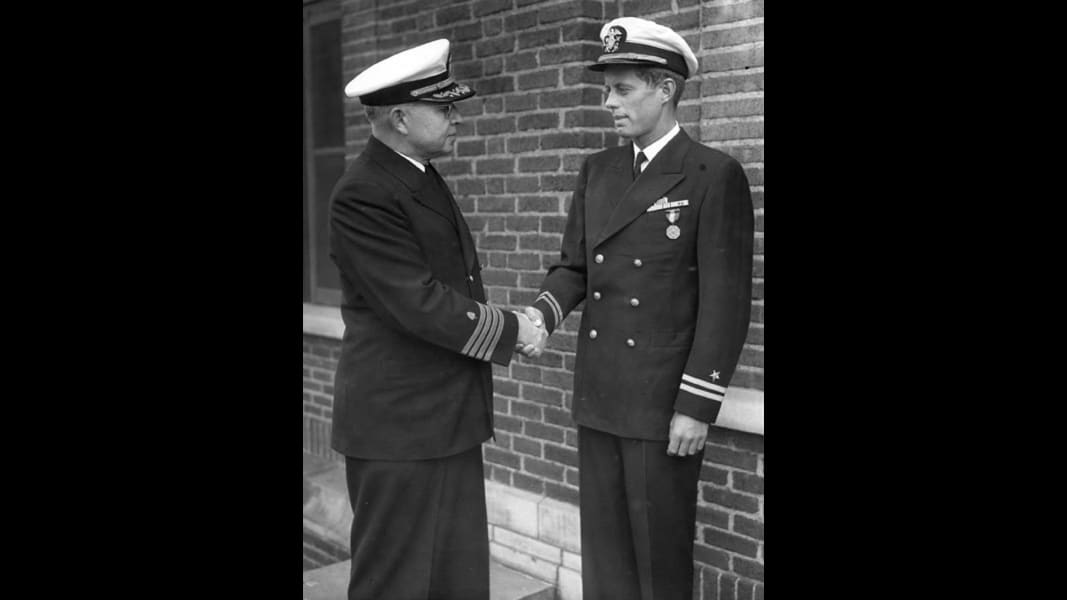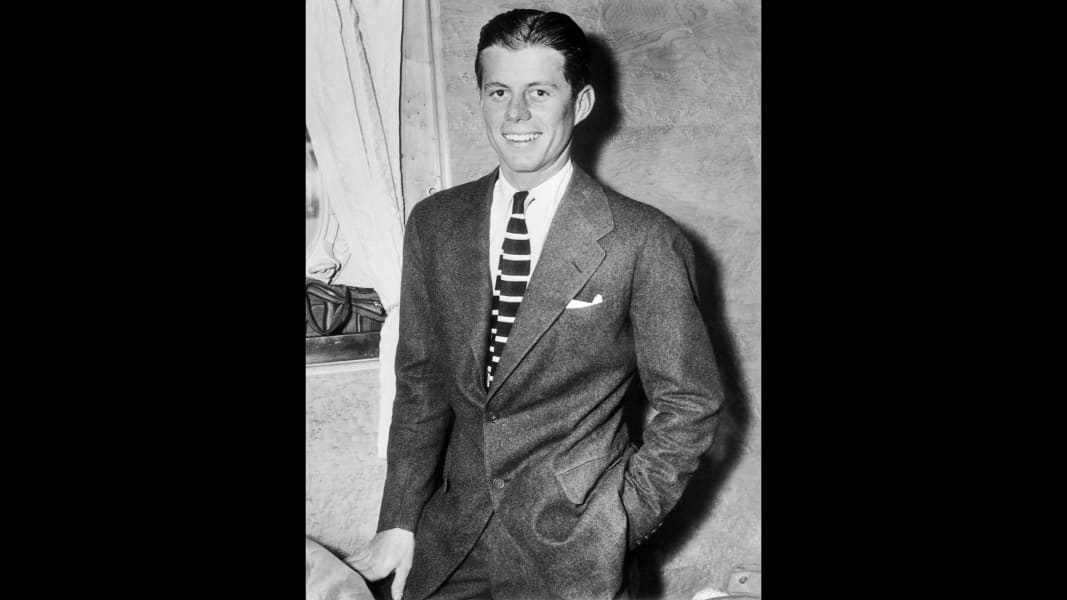Share
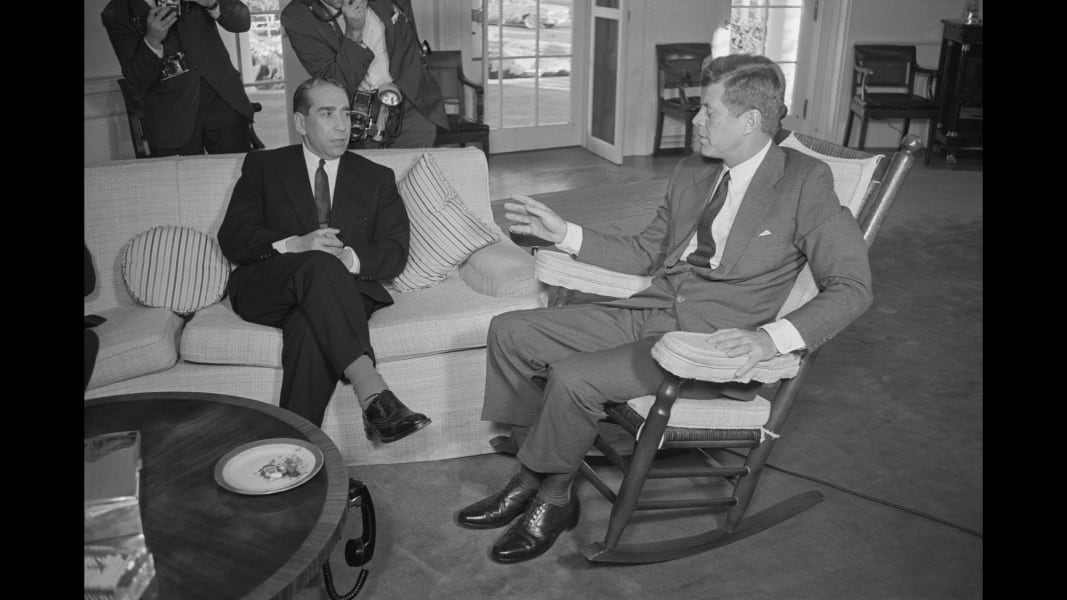

1 of 9
John F. Kennedy, our nation's youngest president, had a host of medical conditions that plagued him since childhood. Here, Kennedy entertains Alberto Franco Nogueira, the foreign minister of Portugal, while sitting in the rocking chair his doctor ordered to support his excruciatingly painful lower back. The photo was taken November 7, 1963, just two weeks before he was assassinated. Bettmann/Getty Images
Despite being turned down by both the Army and Navy due to his bad back and other medical issues, Kennedy was able to get into the Navy with the help of his father, Joe Kennedy. In June 1944, he received the Navy and Marine Corps Medal for his bravery rescuing his men when his PT boat was struck by a Japanese destroyer. He towed one sailor for miles through the ocean to safety on land, aggravating a former back injury and setting the stage for a lifetime of back pain and surgeries. John Fitzgerald Kennedy Library, Boston
After a trip to visit family in London in 1947, John F. Kennedy became so severely ill that a priest was called to read him his last rites. It was then he was diagnosed with Addison's disease, an adrenal gland disorder causing fatigue, muscle weakness, weight loss and abdominal pain. Bettmann/Getty Images
While he was as senator, Kennedy was often on crutches due to back pain. "People would call him a cripple," said Dr. Thomas Pait, a spinal neurosurgeon who co-authored a paper about JFK's failed back surgeries. "He had back rubs and hot baths, and he would use a brace, but if he didn't use crutches, he had to rely on his willpower. And he was incredible; he'd walk into a room in pain but start smiling, waving, and walk out the other door, and people would catch him, because he would basically fall down." Boston Globe/Getty Images
This photo was taken just before an October 1954 spinal surgery designed to fuse Kennedy's spine and hopefully end his chronic back pain. The operation nearly killed him. After a metal plate was inserted in his lower back, Kennedy developed a urinary tract infection. He was so sick, the family again called a priest to administer last rites. Boston Globe/Getty Images
Accompanied by his wife, Jackie, Kennedy leaves the hospital to be with family for the holidays two months after the 1954 spinal fusion surgery. It took that long to overcome the complications. Bettmann/Getty Images
In this image taken in his Senate office in January 1955, Kennedy is suffering from ramifications of his October 1954 spinal implant designed to fuse his spine and relieve his pain. An infection kept the incision from healing, creating an "open, gaping ... hole," according to his speechwriter. The implant was removed in February. Bettmann/Getty Images
In June 1961, Kennedy still used crutches to walk from his car to a ramp to board the presidential yacht Honey Fitz for a cruise down the Potomac River with Japanese Prime Minister Hayato Ikeda. When he reached the ramp, he discarded the crutches and used the railings to support himself. Bettmann/Getty Images
Due to his nearly constant back pain, Kennedy used a back brace for most of his life. He was wearing it when he was assassinated in Dallas on November 22, 1963, at the age of 46. If he had not been wearing it, some say, he might have fallen forward from the impact of the first bullet to the neck and survived the second shot to the brain.
""The brace was a firmly bound corset, around his hips and lower back and higher up," said spinal expert Dr. Thomas Pait. "He tightly laced it and put a wide ace bandage around in a figure 8 around his trunk. If you think about it, if you have that brace all the way up your chest, above your nipples, and real tight, are you going to be able to bend forward?" Library of Congress
""The brace was a firmly bound corset, around his hips and lower back and higher up," said spinal expert Dr. Thomas Pait. "He tightly laced it and put a wide ace bandage around in a figure 8 around his trunk. If you think about it, if you have that brace all the way up your chest, above your nipples, and real tight, are you going to be able to bend forward?" Library of Congress
